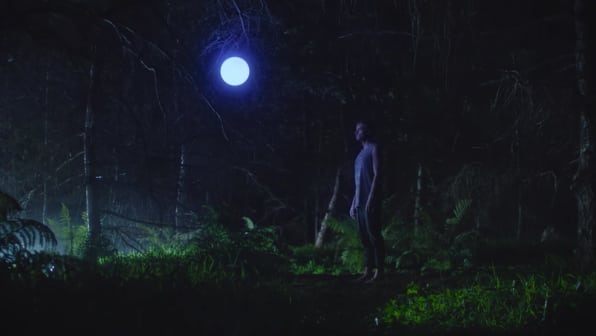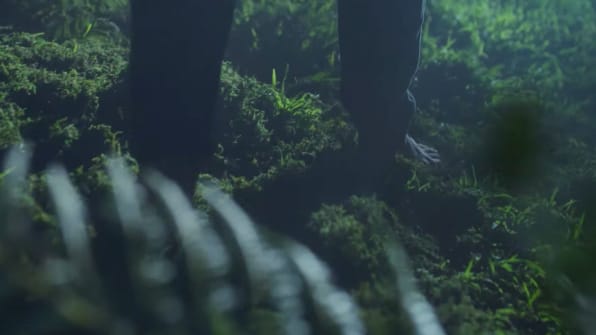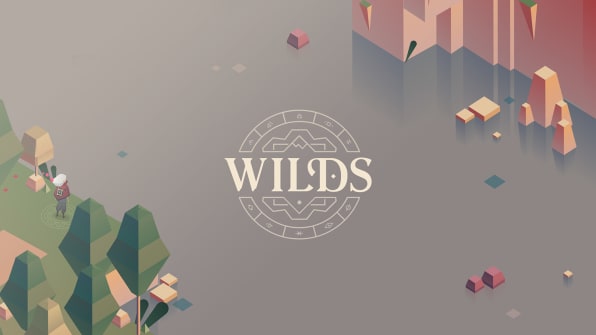Dots Is Making A New And Very Different Game (Starring A Woman!)
Dots cofounders Patrick Moberg and Paul Murphy are an unsurprising duo. They are both well-groomed white men working for a popular technology company. Murphy, the CEO, is very good at inserting business information into the conversation. Moberg, the chief creative officer, is, well, the creative one. He has shaggier hair and the lanky, cross-legged disposition of someone who works with ideas. He sometimes speaks in almost a whisper, as some creative genius is perhaps wont to do. Put together, the two almost comically represent business and creativity.
Dots is about to announce a new game on a new frontier for the company. The company’s mobile games up until now have been fun, aesthetically pleasing puzzles that help you bide away time on your smartphone. But Dots’ still-somewhat-mysterious upcoming app, Wilds, is avatar-driven, meaning players control a character who leads the adventure. And Wilds’ protagonist is a woman. In Wilds, players move the main character through a naturalistic 3D world. As she walks around, players encounter “obstacles” to get her through, in the form of “Tetris-like” puzzles.
For the uninitiated, Dots launched some five years ago with a truly addictive and beautifully designed game called, funny enough, Dots. It was the simplest of gameplay–use your finger to connect dots and voila! they disappear. Because our feeble minds love bright things and patterns, the barebones aesthetic of Dots–along with its addictive gameplay and lovely UI–made it into a huge hit. In the following years, Dots came out with two more games–“Two Dots” and “Dots & Co“–both of which have a similar puzzle-like design but with a few more frills. The apps combined have seen more than 100 million downloads. Dots & Co was released last summer, and introduced some characters who sit on top of the puzzles to help players complete them, as well as a digital currency so people could make in-app purchases more easily (these puzzlers are so addictive, it’s very easy to be tempted into buying more gameplay turns).
But unlike Wilds, in the Dots games, players move through the game level by level in a linear fashion–once you complete a level, you only have one choice as to where to go next. Meanwhile, Wilds is an open-map game that lets players pick from a multiple of options and decide for themselves where they want their character to go next. Wilds allows players to make decisions about where to move, including moving to different puzzles, which will ultimately alter the outcome of the game. Wilds’ avatar play is not untested by the company. The animals in Dots & Co were side characters and could not be moved around from puzzle to puzzle, but they did help provide a blueprint for the designers as they figured out how to inject animate objects into Wilds.

“The [Dots] games have had these linear paths that you work your way through,” says Moberg. But Wilds allows users to play around with different map courses, so “you can explore the different worlds as you see fit,” he says. “There’s way more player agency,” he continues. “The player can choose where they effect the map and when.”
Each of his company’s games, says Moberg, focuses on different types of players and what they look for in a game. The first Dots is for someone who probably doesn’t even have a game on their phone–the cofounders say a third of their business’s audience don’t have any other game besides Dots on their phones.
Beyond the name and knowledge of the shift, I have not been given much more to play with. Dots produced a teaser, which features a strapping blond person in a forest who finds a hovering orb (because of course) and then touches it… which tells me very little about Wilds. The cofounders, however, very proudly showed me the teaser in their snazzy audio video editing cave (I had already seen it, but it was nice to hear it with good speakers and on a big screen).

They did try to explain to me what the game will most look like at the start. Basically, the woman character walks around the game’s world and finds “obstacles” blocking her way. “Once you walk up to one of those [obstacles], that’s when a game of Dots will open.” But, he explains, the game will not be the traditional Dots game we know and love. It will be more like Tetris and, similar to Dots & Co, little creatures embedded in each puzzle will help players out. Ultimately these obstacles will be “very familiar mechanics but with a new twist,” says Moberg, cryptically.
The team has been working on Wilds for nearly two years. In fact, this game was in development before Dots & Co. Dots & Co was almost a testing ground for the new things Wilds is trying. For one, it was the first Dots title to introduce a virtual economy. Moberg and Murphy felt it necessary to have this money system in Wilds but wanted to have a better handle on that process before releasing this more ambitious game. And as noted earlier, Dots & Co also included characters, which they wanted to introduce to the gameplay before going full on into Wilds avatar-driven UI.
“Once we start to understand [those things],” says Moberg, “we could make sure we apply them in the right way with the new title.”

According to Murphy, his team wanted to make a type of game that hasn’t really made it big in the U.S. yet. Role-playing games that include puzzles, he says, are huge in countries like Korea, Japan, and China. “There hasn’t been one that’s really taken off in the West,” he says. But now is the time to strike. Pokémon Go and a few others games have hit the American market and caused quite a stir–the West is finally opening up to new, more complex mobile game forms.
The hope is to get a new kind of player–one that loves this sort of immersive avatar play–while also keeping the people (like me) who just like connecting dots while avoiding strangers’ eye contact on the subway. Both Moberg and Murphy think Wilds will appeal to both types of people, but they’re also still building it out to make it just right. The ultimate metric for success will be retention. Currently Dots’ player retention rate is “well ahead of” 50%, which Murphy describes as “really good.”

The real question is whether Wilds will be a similar, if not better, success. 2016, says Murphy, was the year Dots really figured out its business. The games continued to be wildly popular and the business team–consisting of marketing and data science–finally hit its stride with the creatives. The company saw revenue grow by over 3x in the last year, he says–some months the company was profitable, although other months they had to spend a bit more on marketing, which put them below that threshold. But together, the business and creative teams tinkered with the games’ virtual economies and in-app purchases, which will hopefully be perfected with Wilds. The plan is to, first, build a good game people want to play. Second, once retention is high, build more in-game opportunities and systems that allow players to make payments. Once those two pieces are in place, says Murphy, Wilds will be more widely marketed. This development process, which focuses on retention first, is what helped Dots create three addictive games that bring in money.
Given that we don’t have much more information about Wilds beyond Moberg and Murphy’s words, we’ll have to wait and see how truly addictive this new game is. The duo, however, are excited. “Someone was telling me earlier this week,” says Murphy while smiling, “that it reminds them of the feeling of when they first saw Dots.” We’ll see!
(33)



